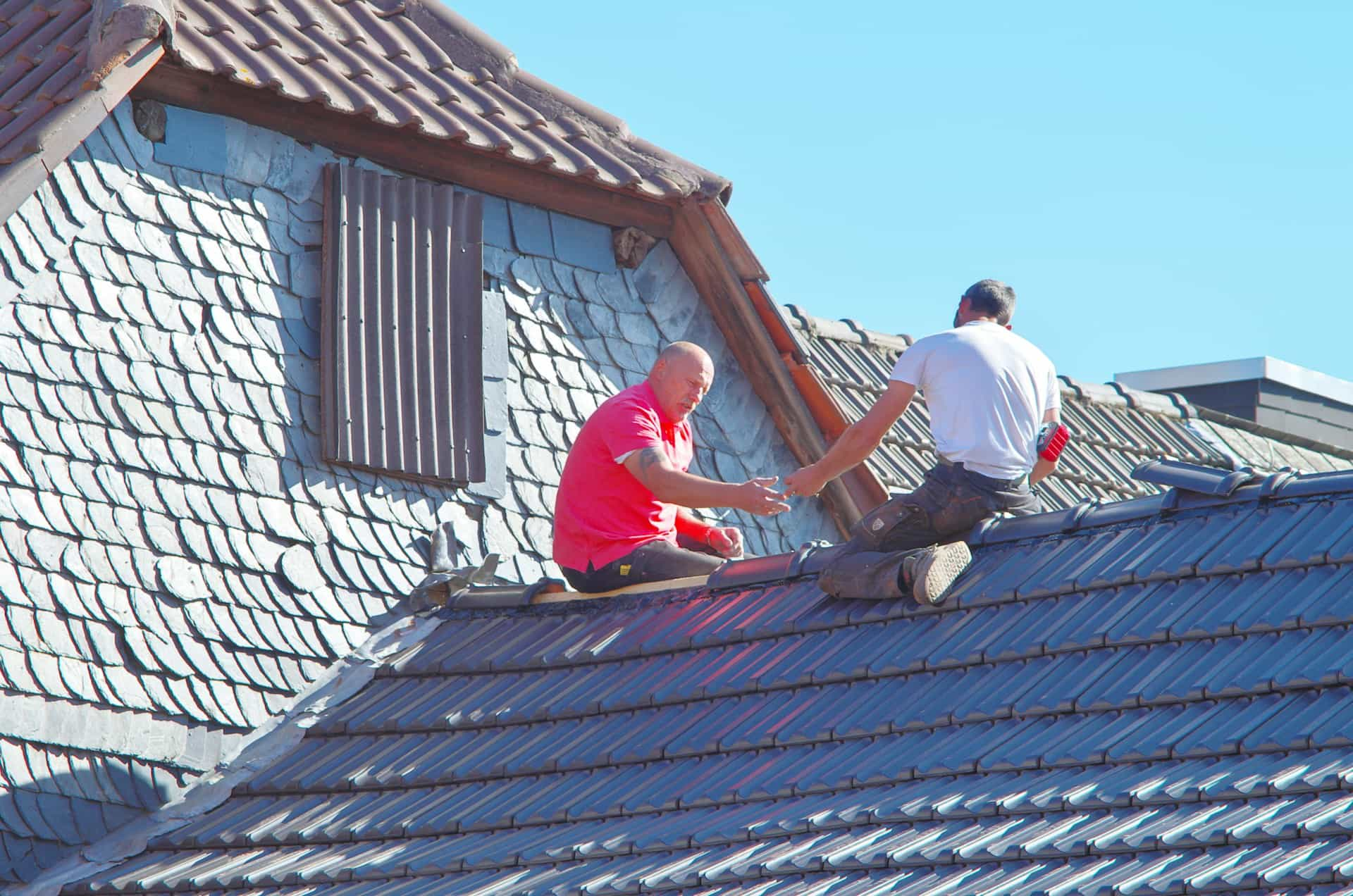What you need to know before starting a roof replacement project
A roof is one of the most vital parts of any structure, protecting from the elements and insulating and maintaining the structural integrity of a building. Given its importance, a roof replacement is a significant project requiring careful consideration and planning. Whether you’re a homeowner looking to refresh your property’s look or a property developer anticipating new construction, understanding the ins and outs of replacing a roof is critical. This guide will lead you through the crucial steps before starting the new chapter in your building’s life.

Hire a reliable contractor
Selecting the right contractor is the most crucial step in your roof replacement journey. Look for professionals with a solid reputation and verifiable references. When you have settled on these experts, ensure everything is formalised with a clear and comprehensive contract. The contract should detail the scope of work, materials to be used, timelines, warranties, and payment schedules.
Additionally, confirm that they are licensed and insured, protecting you from potential liabilities during the project’s duration. A trustworthy contractor will not hesitate to answer your questions and keep you informed throughout the process. Remember, a roof replacement is a significant investment, and you want to ensure it’s done right the first time.
Evaluate your roofing options
Regarding roofing materials, there are plenty of options in the market. As you start exploring choices, keep in mind the design and style of your building and your budget. Some common materials include:

- Asphalt shingles are the most common roofing materials, thanks to their affordability and ease of installation. They come in various styles and colours, making them suitable for various architectural designs.
- Metal roofing is becoming increasingly popular due to its durability and energy efficiency. It comes in different types, such as aluminium, copper, and steel, each with pros and cons.
- Slate roofing is a premium material known for its longevity and elegant appearance. It’s also one of the most expensive options on the market.
Each has pros and cons, so do thorough research to determine which is best for your needs. Consider cost, durability, and aesthetic appeal when choosing your roofing material. Your contractor can guide you in selecting the best option that suits your needs and budget.
Plan for disruption
Roof replacement can be disruptive, with noise, dust, and workers impacting your daily routine. Therefore, it’s crucial to plan accordingly, informing your family members or building occupants of the upcoming work. Protect your property by clearing the attic, securing loose items, and covering valuable landscaping.
Talk to your contractor about the timeline and any needed accommodation changes, like parking or restricted area access. Stay in touch to keep the project on track and reduce disruptions. Arrange for pets or off-site activities to limit stress for noise-sensitive animals.
Obtain necessary permits
Before starting your roof replacement, getting the necessary permits is crucial. Permits ensure your project complies with local codes and safety rules, protecting your property’s value and legality. While your contractor usually manages this, as the homeowner, you should grasp the permit needs and verify all documents before work starts.
Neglecting this step can lead to fines, delays, and even the need to redo work that doesn’t comply with codes. Contact your local building department to familiarise yourself with the necessary procedures and timelines. Remember, this initial groundwork lays the foundation for a smooth, legally compliant transition to your new roof.
Consider additional improvements
While undertaking a roof replacement, it’s the perfect time to evaluate your home’s energy efficiency and integrate improvements such as better insulation or solar panels. Adding a layer of rigid foam insulation beneath the new roofing material can significantly cut energy costs and enhance indoor comfort. Solar panels can reduce long-term electricity bills and have a positive environmental impact.
Consider investing in energy-efficient roofing underlayment for a tighter barrier against the elements. Assess your gutters and downspouts for effective water management. Engage your contractor for a holistic home improvement strategy to enhance your roof replacement.
Stay informed throughout the process
Replacing a roof is a multi-step process that requires coordination between you, your contractor, and other professionals involved. Maintaining open lines of communication with your contractor allows for immediate feedback and resolution should any concerns arise. Regular updates can come through email, text messages, or scheduled check-ins, depending on your preference.
Being proactive is key. Ask for progress updates and clarification promptly. Keeping records of these discussions is vital for future reference and issue resolution post-project. Your active role in the roof replacement phase is crucial for project success.
A roof replacement project is an investment in your property’s future. By proactively addressing the considerations outlined in this guide, you can ensure that the process runs smoothly, that the outcome is of high quality, and that you experience the full benefit of your new roof. Remember that preparation is key. Take your time to research, plan, and choose wisely. Your roof replacement can be a seamless and satisfying transformation with the right approach.
![[AD] We’re a cricket-mad family, so we’re buzzing that @thehundred is back this August! 🏏🔥
To get ready, M tried out the official FREE Activity Pack — and it’s brilliant! 🙌
Packed with fun games, creative challenges and sporty tasks, it’s perfect for getting kids hyped whether you’re at home or on the go.
👉Download yours now (link in bio)
@londonspirit @ovalinvincibles #EveryMomentCounts #TheHundred
#EnglandCricket #CricketFamily #TheHundredCricket #LondonBloggers #Cricket #CricketIsLife #kidsfun](https://suburban-mum.com/wp-content/uploads/2022/11/505472555_18531279601016840_7092520074819907569_n-180x320.jpg)



![[AD - Press visit]
We enjoyed the glorious sunshine this weekend with a trip to Brighton. We went on the @brightoni360official which is right by the sea front.
The i360 pod take a slow journey up, allowing you to take in views across Brighton and the South Downs 450ft above ground. There’s a bar inside with drinks and snacks available to purchase and the experience lasts 25 minutes.
Afterwards, we headed to the open air roller rink for a roller skating session!
The roller rink is:
⭐ Suitable for over 5s
⭐ £6.50 if you have your own skates or £9.50 if you need to hire them
⭐ 45 minutes per session
Full details to visit the i360 + skating
📍 Brighton i360, Lower Kings Road, Brighton BN1 2LN
🚗 Parking nearby (we parked in the Regency Square Car park)
🎟️ Prices start from £25.40 for an adult and £16.90 for a child
🕐 Opening hours are currently Sun-Fri 10.30am-18.30pm and until 19.30pm on Saturdays
☕️ Bar inside the i360, cafe and gift shop
Book tickets here:
https://tickets.brightoni360.co.uk/tickets/?_ga=2.195305772.1869001490.1689671753-1757164059.1689671753/#events?eventid=157](https://suburban-mum.com/wp-content/uploads/2015/04/417980235_313576471048632_3682382982231216432_n.jpg)

![[AD] ***Summer of fun at Barracudas Activity Camps!****
There is plenty for kids to do at @barracudas_activity_day_camps
From Tennis, Archery, Swimming, Motor Sports and more you can be sure that there will be something for kids aged 4.5-14. ⚽🏈🥅🎾🏓🏎️🏹🏊♂️🏉
You can book on a day by day basis - so it can fit in with any other days out/activities you have planned and there are early drop off and late pickup options available. Barracudas are also Ofsted registered so you can use your Childcare Vouchers too.
⭐⭐⭐Get £20 off a week or £4 off a day using my discount code: MARIA20⭐⭐⭐
#BarracudasActivityDayCamp #BarracudasActivityCamp #BarracudaAmbassadors #SummerHolidays #SchoolHolidays #Summer2023 #SummerCamp #DayCare #Camp #KidsCamp #surreymummy #surreymums #SummerOfFun #ActivityCamps #HolidayCamps #Childcare #SchoolHolidays #schoolholidaycamps](https://suburban-mum.com/wp-content/uploads/2024/07/353583570_625625966167953_545896259645102575_n.jpg)



![[AD] We have some super exciting news...we have been chosen to be Laser Quest Ambassadors, and the boys are over the moon!
We are really lucky that our local Laser Quest (@laserquestkingston) is just around the corner from us. It means we can pop in of a weekend or anytime during the school holidays, and with summer just around the corner, I know Laser Quest will be one of our go-to places for some family fun.
As well as games of Laser Quest, there are also VR experiences and arcade amusements too. To find out a bit more about how Laser Quest works, you can read my blog post: https://www.suburban-mum.com/laser-quest-kingston/ (clickable link in bio)
Don't forget to keep an eye out for our Laser Quest posts - I'm going to be giving away two family passes to use at Laserquest Kingston!
If you can't wait and want to head down to Laser Quest to try it out, use the code SUMMER30 for 30% off your booking. The code is valid from now until the end of August 2023 and can be used on Laser Quest games and birthday party bookings.
#LaserquestAmbassador #Laserquest #LaserquestKingston #ActivitiesForKids #FamilyFun #DaysOutWithKids #Lasertag #LaserquestVR #Kingston #ThingsToDoInKingston #SurreyFamilyDaysOut #ThingsToDoWithKids #RainyDayFun #SurreyMummy #SurreyLife #LifeWithKids #LifeWithBoys #familyfunday](https://suburban-mum.com/wp-content/uploads/2015/04/353230107_797358078406942_2405522556733455165_n.jpg)

![[AD] The sun has finally made an appearance and the boys have been making the most of it by spending it
in the garden.
They’re go-to is always football and they’ve been trying to improve their aim and accuracy with the new Messi Foldable Footlball goal from the #MessiTrainingSystem range.
I love the fact the goal is foldable, making it easy to store away when not in use. It is also lightweight so you can effortlessly pack it up and take it to the park or to a friend’s house.
The Messi Foldable Football Goal retails at £36 and can be purchased from @argos
You can read my full review here: https://www.suburban-mum.com/messi-foldable-football-goal/
#TrainLikeMessi #FoldableFootballGoal #FootballSkills #OutdoorFun #LionelMessi #LeoMessi #FootballAtHome #OutdoorKids #JustGetOutside #OutdoorsAndFree #ScreenFreeKids #WhateverTheWeatherKids @flair_gp](https://suburban-mum.com/wp-content/uploads/2015/04/341194882_615024710178056_41977149395989448_n.jpg)

![[AD] We are absolutely thrilled to announce that we are Barracuda Ambassadors again this year.
With Easter just around the corner, the boys were sent the @barracudas_activity_day_camps new camp kit in preparation for the school holidays.
There’s a wide range of activities for kids aged 4.5 - 14 including Tennis, Archery, Basketball, Arts & Crafts and more.
If you like the sound of Barracudas, find out more over on their website. You can also save £20 a week or £4 a day, using my discount code: MARIA20](https://suburban-mum.com/wp-content/uploads/2024/07/336812306_765234558514317_685553691647241974_n.jpg)


![[AD - Gifted]
Last weekend we were invited to try out @tsarettaspice’s new Bottomless Brunch menu and I can tell you it was thumbs up all round!
There’s a good choice tapas on offer from Punjabi fish fingers, Indo Chinese Chicken to Spiced Lamb Scotch Eggs and Manchurian Cauliflower (which was amazing!)
If you’re local to Twickenham and fancy giving them a try here’s are the details.
Tsaretta Spice Bottomless Brunch
⭐️£37.50 per head for bottomless Prosecco or cocktail of the day
⭐️£55 per head for bottomless Champagne
⭐️ Food included: 4 tapas selections and dessert or 2 tapas selections, a pav or naanwich and dessert
⭐️ Non-alcohol brunch is also available
Tsaretta Spice
55 Church Street
Twickenham
TW1 3NR
You can also read our full review over on the blog (link in bio)](https://suburban-mum.com/wp-content/uploads/2024/07/334565436_5960402314015030_663031098700829518_n.jpg)
![[AD] What does family look like for you?
I am fortunate to be surrounded by strong, powerful women in the form of my mum, sister and mother-in-law (along with many others). With Mother’s Day just around the corner, @BootsUK want to celebrate all the different mums and mother figures we are lucky enough to have in our lives. They have a huge range of Mother’s Day gifts to choose from so we can show them how much they mean to us. (swipe to take a look at some of my choices)
If you want to express love and appreciation for the mother figure(s) in your life, head to Boots.com to find the ideal gift. They have a whole host of gifts, so you can be sure to find something to suit all tastes. Celebrate the #LoveForAllMums this Mother’s Day with Boots.
](https://suburban-mum.com/wp-content/uploads/2015/04/334276459_136658625736352_6403224988403337253_n.jpg)




